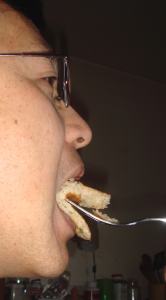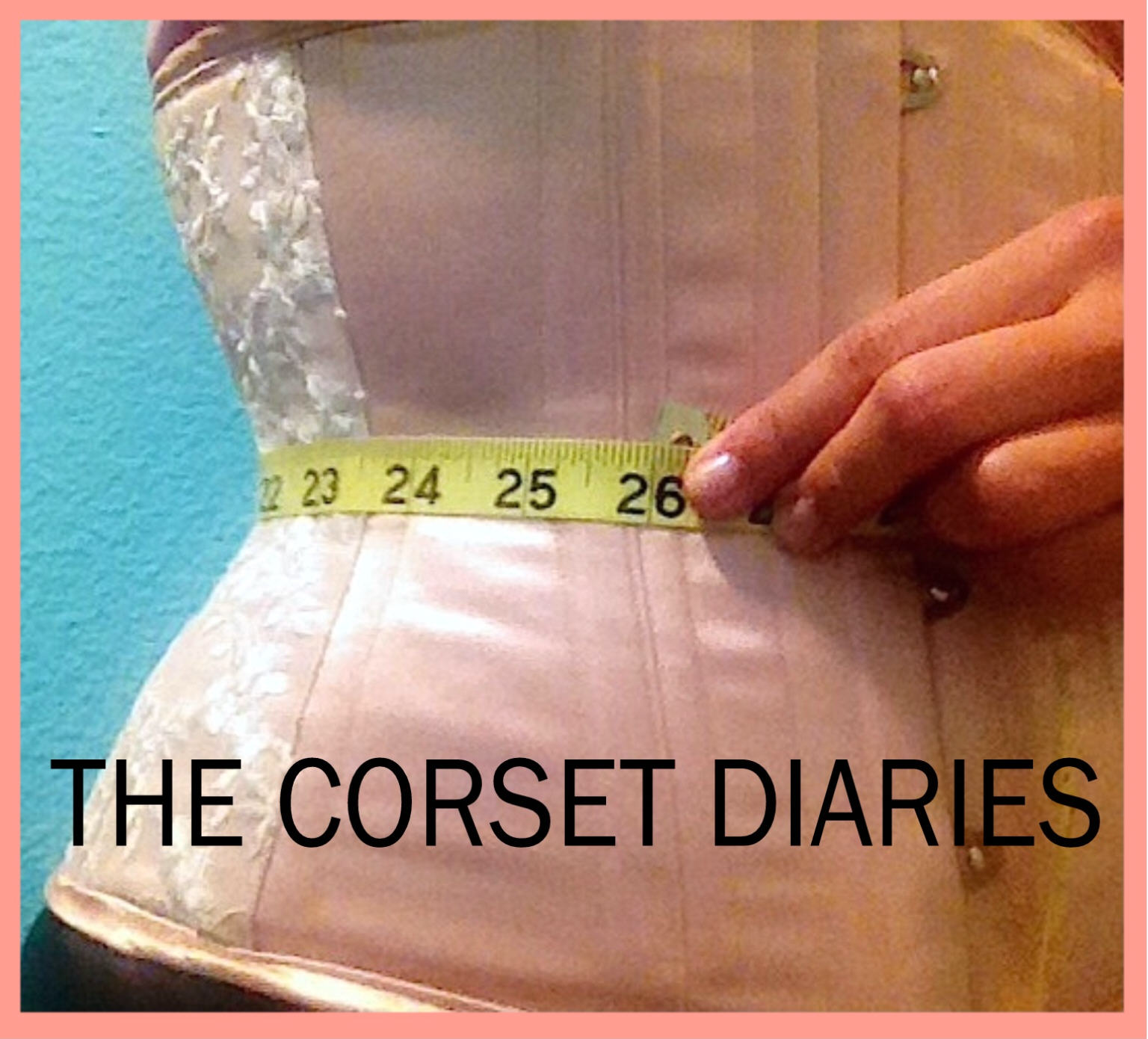 For those in corset waist-training, I have always advised about the efficacy of grazing, with smaller plates used and snacking throughout the day, rather than eating three larger meals. Combined with sitting down to eat, take small bites (unlike the chapt pictured here! How many times have you seen someone actually fold over food to shovel more of it into his (or her) mouth when eating? I have seen it a lot!), chewing well and slowing down the whole process, this helps process food thru the intestines and out, especially when you are squeezing your midriff with a corset. It also contributes to a more pleasant eating experience when corseted.
For those in corset waist-training, I have always advised about the efficacy of grazing, with smaller plates used and snacking throughout the day, rather than eating three larger meals. Combined with sitting down to eat, take small bites (unlike the chapt pictured here! How many times have you seen someone actually fold over food to shovel more of it into his (or her) mouth when eating? I have seen it a lot!), chewing well and slowing down the whole process, this helps process food thru the intestines and out, especially when you are squeezing your midriff with a corset. It also contributes to a more pleasant eating experience when corseted.
I recently learned about another process that goes on when we eat, one that caused me to modify my general advice. It deals with the “migrating motor” complex.
“The migrating motor complex is a distinct pattern of electromechanical activity observed in gastrointestinal smooth muscle during the periods between meals. It is thought to serve a “housekeeping” role and sweep residual undigested material through the digestive tube. As studied in dogs and man, the cycle recurs every 1.5 to 2 hours.”
If we continue to eat between meals and break the 1.5 to 2 hrs cycle, we reduce or stop the migrating motor reflex, and food remains in our stomachs. Ouch! That works contrary to what we want when corseting snugly and/or for long hours of dedicated waist training. I remember well when a piece of pizza I had bolted down while corseted, remained in my stomach and when some hours later I took my corset off, ouch! The pizza apparently rushed out and down and I got a horrible cramp for some minutes or longer!
My Kaiser gastro physician recently educated me about what I now surmise was going on with or was related at the least to the pizza incident, and about this process of the migrating motor complex. She advised that I not snack until three — or more! — hours after eating a major meal. In addition she advised me not to eat dinner after 6 pm (we eat at 7 pm) until breakfast, to allow the stomach to empty totally and food to start moving down.
Since I’m an inveterate “grazer” of small portions thoughout the day, especially when I am wearing corsets regularly, I’m finding this change back to a more traditional way of organizing my food intake, is a bit tough. To deal with hunger pangs I am eating a bit more at each meal, including eating dessert right after dinner rather than waiting a few hours (dessert means dried or fresh fruit with nuts, or yogurt typically — no white sugar treats!). I also am eating more protein and veggies, and reducing simple carbs like breads (sigh….I am not depriving myself totally, but I miss it already!) and pastas.
I’m still confident that eating breakfast is a “must” for anyone waist training or not, and it must mainly be high protein. Every morning I eat one piece of bacon, then scramble an egg with a bit of cheese and lots of fresh spinach to make an omelette. When I soon thereafter go swimming three times a week, I never have moderate to severe sugar crashes during the swim or right after in the dressing room, as I used to, when I would eat steel cut oatmeal or non-sugary high fiber cereals for breakfast.
So what would I now advise my three-month dedicated waist-training students?
For the first 2 to 4 weeks of formal training, try grazing, meaning, divide your daily food portion/eating or snacking into 8 times a day and chew each bit of your food 30 times before swallowing for the first two weeks. Sit down for every meal or snack. This will normally result in reducing the total daily food portion you feel inclined to eat. If at any time you encounter acid reflux, bloating, or constipation, then consider reducing your snacking or eating times down to 4 times a day.
In any case, do not eat for at least 3 hrs. after the last time you ate a meal or a snack, and try not to eat anything (drinking liquids is fine) much after 6 to 8 pm.
The good news is, if you once disrupt and cut short the migrating motor process (any food introduced into your tummy will do that) then you will likely get it back if you change your ways according to the above advice that I received from my Kaiser specialist.




